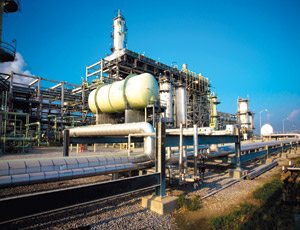Uncertainty looms over the petroleum sector. In March, the industry saw new opportunities open up when President Obama lifted a 20-year moratorium on offshore drilling along the East Coast, as well as portions of the Gulf of Mexico and the Alaskan coastline. Three weeks later, the political environment took a dramatic turn following the April 20 explosion at BP’s Deepwater Horizon rig in the Gulf of Mexico. The administration ordered a temporary ban on offshore drilling in the Gulf and halted exploration of several new areas. Portions of the oil industry have since been locked in a court battle over the federal government’s actions, leaving petroleum engineering and construction firms with a fuzzy market forecast.

“Until April 20, there was cautious optimism because of the signals that more offshore work would happen,” said Peter Oosterveer, energy and chemicals president of Irving, Texas.-based Fluor Corp. “With the disaster in the Gulf, people went from thinking we’d take a step forward to saying we may have taken at least two steps back. The cautious optimism has been replaced by pessimism about where this market will go.”
Meanwhile, crude oil prices remain shaky. When oil prices collapsed in late 2008 and plans for new projects were driven to nearly a standstill, some engineering executives remained hopeful that 2010 would bring a rebound and get projects back online. Although crude oil prices have risen well above the sub-$45-per-barrel levels of last year, volatility remains. Oil hit $85 per bbl in April, but within a month it was trading at $65 in light of concerns over the U.S. economy as well as issues in the European Union.
“Between not knowing where the economy is going and not understanding if demand will grow, clients are reluctant to make big decisions,” says Lou Pucher, president of The Shaw Group’s energy and chemicals group in Houston.
To add to the concerns, petroleum inventories hit a 20-year high in May, and refineries saw margins drop 63% in two years, according to the business news service Bloomberg.
Oil companies are responding with restraint. In May, ConocoPhillps assured shareholders it would show more discipline in its capital spending, dropping to $11 billion to $12 billion a year from recent averages of around $15 billion a year, to focus on its strongest projects.
Marathon Oil Corp. announced in late 2009 that its days of significant capital spending may be over for a while. The company’s 2010 budget calls for $4.86 billion in capital expenditures, down from $5.9 billion in 2009. “We have a very high level of investment largely behind us, including the Alvheim/Vilje and Volund developments off Norway, oil-sands mining in Canada and the Garyville major expansion project in Louisiana. Now it’s time to realize the benefits of those projects,” Clarence Cazalot Jr., president and CEO of Marathon Oil, announced in November.
Although engineering firms see few, if any, multibillion-dollar projects moving forward in North America in the near future, plans are in the works. Many firms are subsisting on front-end engineering and studies. “So far this year, our proposal activity is picking up again,” says Rob Berra, senior vice president, commercial operations, for Clinton, N.J.-based Foster Wheeler USA. “Most of what we see are projects in the early stages that don’t cost the client too much to evaluate. We hope that activity translates into real work.”
Energy and Chemicals President,
Fluor Corp.
In February, Fluor was selected by Brazilian energy company Petrobras to provide front-end engineering studies for a prospective U.S. refinery project in Pasadena, Texas. Fluor is providing engineering, estimating and project management services for the conceptual engineering phase of the proposed 100,000 barrel-per-day refinery. The study will be completed later this year.
Companies remain hopeful for renewed activity in the Alberta oil-sands region, which saw most of its work collapse with the plummet in oil prices last year. Imperial Oil, the Canadian subsidiary of ExxonMobil, bucked the trend and continued to move ahead with its plans, including its $8-billion Kearl oil-sand project.
| Rank* | Firm | $ Mil. |
|---|---|---|
| 1 | Fluor Corp. | 2,742.9 |
| 2 | Jacobs | 1,916.5 |
| 3 | KBR | 1,429.8 |
| 4 | Mustang Engineering | 868.0 |
| 5 | Bechtel | 796.0 |
| 6 | CB&I | 780.1 |
| 7 | AMEC | 751.8 |
| 8 | URS Corp. | 626.8 |
| 9 | CH2M HILL | 614.1 |
| 10 | The Shaw Group Inc. | 580.7 |
| 11 | McDermott International Inc. | 403.8 |
| 12 | UniversalPegasus International Inc | 339.0 |
| 13 | S&B Engineers and Constructors Ltd. and Affiliates | 335.9 |
| 14 | WorleyParsons Group Inc. | 327.4 |
| 15 | ENGlobal Corp. | 326.3 |
| 16 | Fugro (USA) Inc. | 314.2 |
| 17 | CDI Engineering Solutions | 187.4 |
| 18 | Insituform Technologies Inc. | 112.1 |
| 19 | Gulf Interstate Engineering Co. | 93.2 |
| 20 | Willbros Group Inc. | 90.3 |
| *Based on 2009 contracting revenue from petroleum as reported in enr’s survey of leading contractors and design firms. | ||



Post a comment to this article
Report Abusive Comment